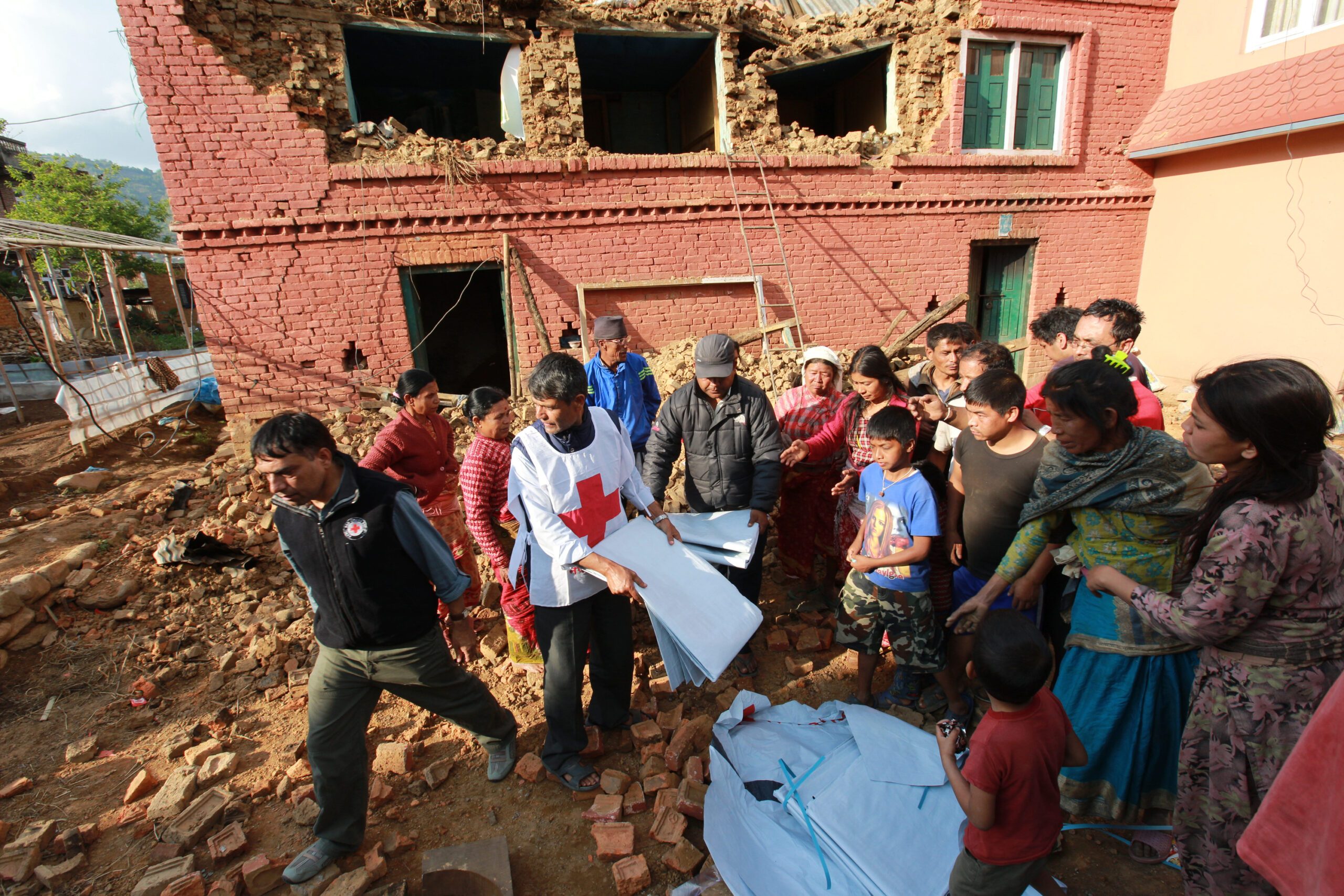SUMMARY
This is AI generated summarization, which may have errors. For context, always refer to the full article.

GORKHA, Nepal (UPDATED) – Hungry and desperate villagers rushed towards relief helicopters in remote areas of Nepal Tuesday, April 28, begging to be airlifted to safety, 4 days after a monster earthquake killed more than 5,000 people.
“The ground keeps shaking, even this morning it did. Every time it feels like we will be swallowed, that we will die now. I want to get out of here!” said Sita Gurung, 24, whose home had been wrecked.
As the Himalayan nation’s Prime Minister Sushil Koirala said getting help to remote areas was a “major challenge”, aid finally began reaching areas that had to fend for themselves since Saturday’s (April 25) 7.8-magnitude quake.
In a televised address late Tuesday, Koirala declared three days of national mourning for the 5,057 people known to have perished in Nepal alone.
More than 100 people died in neighboring countries such as India and China.
Around 8,000 people had been injured while the United Nations estimated that 8 million people had been affected. (READ: UN preparing ‘massive’ aid operation in quake-hit Nepal)
Among the dead were 18 climbers who were at Mount Everest base camp when an avalanche triggered by the quake flattened everything in its path. The victims included two American climbers, an Australian and a Chinese. (READ: Fearful foreigners desperate to leave Nepal quake zone)
Countries far and wide have joined the relief effort in what is one of Asia’s poorest countries, with neighboring India playing a leading role.
In Gorkha, one of the worst-hit districts, terrified residents ran with outstretched arms towards an Indian army helicopter to plead for food and water.
An Agence France-Presse journalist on board saw scores of houses across several villages in the district turned into twisted mounds of wood and corrugated tin roofs.
“We haven’t had any food here since the earthquake. Everything has changed, we don’t have anything left here,” Gurung told Agence France-Presse, gesturing towards what was left of her home in the village of Lapu.
An army officer lifted her onto a stretcher and carried her away.
Military planes from numerous other countries such as the United States, China and Israel have also joined the rescue effort.
Koirala told an emergency all-party meeting the government was sending desperately needed tents, water and food supplies to those in need.
But he said authorities were overwhelmed by appeals for help from remote Himalayan villages.
‘Appeals from everywhere’
“Appeals for rescues are coming in from everywhere,” a statement from Koirala’s office quoted him as saying.
“But we have been unable to initiate rescue efforts in many areas at the same time due to lack of equipment and rescue experts.”
Jagdish Chandra Pokherel, a Nepal army spokesman, told Agence France-Presse: ” The terrain is such that very remote areas take a very long time to reach and without being there physically we won’t be able to reach them, help them, rescue them. Our troops are trying their best.”
In a sign of how difficult conditions are, Nepalese official Uddav Prasad Bhattarai said 250 people were feared missing after an avalanche Tuesday on the popular Langtang trekking route.
With fears rising of food and water shortages, Nepalis were rushing to stores and petrol stations to stock up on essential supplies in the capital Kathmandu.
Nepal has declared a state of emergency after the disaster, its deadliest in more than 80 years.
Families who work in Kathmandu were packing onto buses – some even sitting on the roofs – in an exodus from the city.
Those who remained in the capital were sleeping outdoors in tents in parks and other open spaces. Many had lost their houses, others were too terrified to return home after several powerful aftershocks.
With just plastic sheets to protect them from the elements, many were desperate for aid and information on what to do next.
“We’ve been staying here for three days, living under canvas. We’re counting every bite we eat, every drop we drink,” said 28-year-old housewife Rama Shrestha, who was camping out with her 5-year-old son.
“And now on top of everything, it is raining. What can we do? Where can we go? We are too scared to return home. What if another one strikes?”
Hospitals overwhelmed
Hospitals have been overwhelmed, with morgues overflowing and medics working flat out to cope with an endless stream of victims suffering trauma or multiple fractures.
The United Nations said Tuesday it was releasing $15 million from its emergency fund to help relief efforts while the World Food Programme said it aimed to get food aid to 1.4 million people over the next three months.
UN aid chief Valerie Amos will spend 3 days in Nepal from Thursday, April 30, to “show solidarity with the Nepalese people, raise the visibility of the crisis and assess the response operations,” UN spokesman Farhan Haq said Tuesday.
Australia said it was raising its level of aid to $4.7 million and sending a military plane to bring in relief supplies and evacuate stranded citizens.
But lack of space at the only international airport was hampering efforts to bring in relief by air.
The quake is a serious blow to the economy of the impoverished nation, already reeling from a decade-long civil war that ended in 2006.
Nepal and the rest of the Himalayas, where the Indian and Eurasian tectonic plates collide, are particularly prone to earthquakes.
A 6.8 magnitude quake hit eastern Nepal in August 1988 killing 721 people, and a magnitude 8.1 quake killed 10,700 people in Nepal and India in 1934. – Annie Banerji, with Paavan Mathema in Kathmandu, AFP / Rappler.com
Add a comment
How does this make you feel?
There are no comments yet. Add your comment to start the conversation.